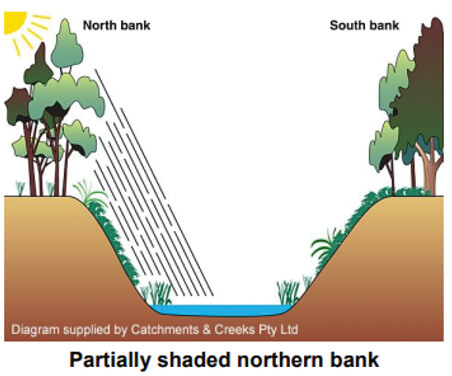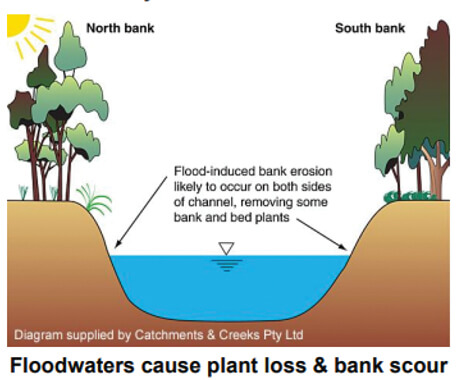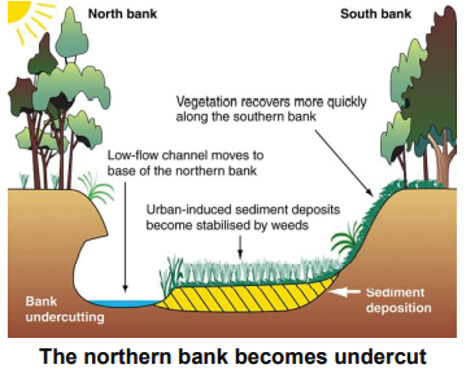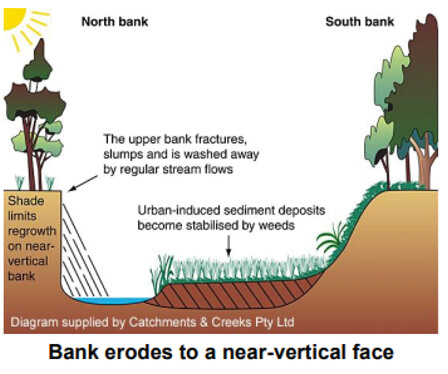Erosion is a common problem for landholders with watercourses running through their properties. Understanding the processes that cause erosion is key to finding short and long-term solutions. If done well, erosion control can not only fix the immediate problem but build resilience and create habitats for wildlife. This article explores a common type of erosion caused by flooding.
Bank scour often occurs during flood events. The level and severity of bank scour erosion depends on flow velocity, the soil profile, vegetation type and whether there are blockages in the creek such as large fallen trees and other debris.
The general rule is the smaller the waterway, the greater the influence of vegetation in stabilising the creekbank. Large root balls, buttressing roots and entangled root mats all play a part in stabilising banks and assisting in soil retention and accumulation.
However, you may notice a peculiar trend while looking at creeks and riverbanks on your property. Is there more erosion occurring on the northern bank? In creeks and rivers that run east-west in the southern hemisphere, the northern banks are shaded. Typically, this results in a different type of plant assemblage and plant density growing on the northern banks. Erosion can occur along both banks however the northern bank is likely to experience more significant soil loss due to reduced vegetation strength and stability over time.
Most waterways experience sediment movement during floods. The quantity of sediment usually increases with the size of the catchment and is also influenced by surrounding land use. Sediment appears as murky, muddy water flowing through our creeks and rivers during floods.
Diagrams courtesy of Catchments & Creeks Pty. Ltd.
When sediment moves downstream, it can increase erosion of the north bank and can settle on the lower banks of the creek. As sediment is typically high in nutrients, this can result in rapid weed growth, which in turn stabilises the sediment and changes the shape of the creek bed. This can create a narrower flow channel that can lead to bank undercutting and potential slumping. If slumping occurs, this can result in the northern bank being washed away creating a near vertical wall, which can further increase the effects of shading and make it difficult for vegetation to establish.
As landholders throughout SEQ begin to repair and rehabilitate areas that have experienced significant erosion and soil loss, it is essential to understand the basic principles of erosion before attempting management solutions. There are several cost-effective bank stabilisation options using soft engineering methods including battering and revegetation, benching, brushing, erosion control blankets and geo/coir logs. More details can be found in Creek Erosion Field Guides by Grant Witheridge, Catchments & Creeks (reviewed on page 9).
References
Witheridge G (2021) Creek Erosion Field Guide Part 1 – Introduction. Catchments & Creeks Pty Ltd.
Witheridge G (2021) Creek Erosion Field Guide Part 3 – Bank Stabilisation. Catchments & Creeks Pty Ltd.
Article and photo by De-Anne Attard
Land for Wildlife Officer
Sunshine Coast Council




